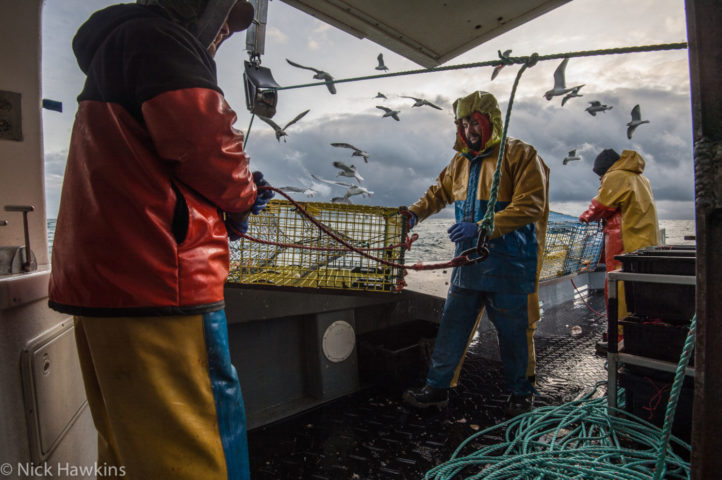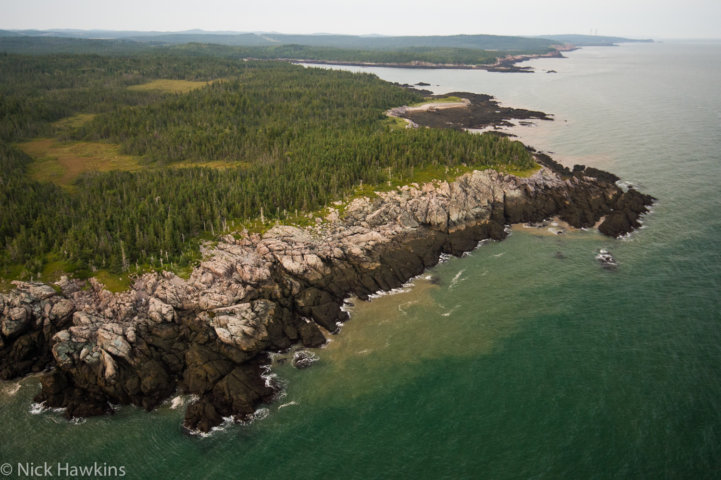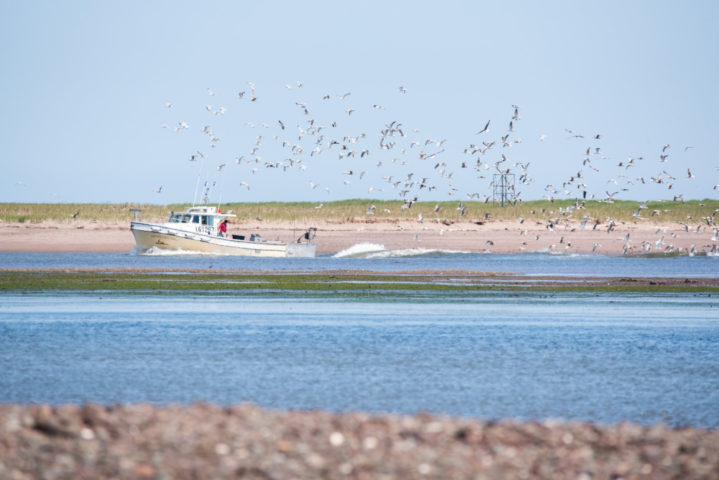Major climate report spells big changes from land to sea
The United Nations’ Intergovernmental Panel on Climate Change (IPCC) released its latest comprehensive climate report on Monday, Feb. 28. The report reiterates much of what Conservation Council supporters already know: climate change is destroying nature, taking lives, and making the world poorer. We need to drastically reduce emissions to lessen these impacts in the future and prevent irreparable damage.
A safer world is possible. The actions people, governments and businesses take today still matter. So, what do climate impacts and solutions look like for New Brunswick’s oceans, coasts and coastal communities?
Big changes, from the land to the sea
New Brunswick is a coastal province. Our cultural and economic life has always been tied to the sea. The Wabanaki peoples, since time immemorial, and the settlers who came more recently, have relied on our coastal waters for food and transportation.
Relationships to coastal waters have formed the base of the cultures that have emerged from this place. Even far inland, salmon, gaspereau, and other species running upriver from the sea have sustained communities and become culturally significant themselves. Today, food fished from the ocean is critical to New Brunswick’s economy, with seafood exports valued at $1.7-billion.

To maintain the health, culture and prosperity of our communities, we need to do right by the ocean. But today, impacts from climate change are upsetting the balance that has allowed our oceans to be so productive and to play such a significant role in New Brunswick’s story.
As the waters of the Bay of Fundy warm, species that have thrived here, like lobster, are finding their habitat inhospitable, with scientists predicting they will eventually shift north for colder waters.
Excess carbon dioxide absorbed by the ocean creates more acidic waters, a process that is exacerbated by nitrogen runoff from farming, sewage, and large rain events. More acidic waters are causing stress for a host of ocean creatures, but acidification is especially harmful to animals that produce shells, like most of New Brunswick’s commercially-fished species—lobster, scallops, oysters and our shellfish aquaculture industry, for example.
Ocean ecosystems are complex, and the stresses they have long faced—such as pollution, noise, historical overfishing and whaling, and other consequences of human activity—are exacerbated by climate change.
Impacts on one species can cascade throughout the whole system. This is part of the story with the challenges facing North Atlantic right whales. Changes in water temperature and ocean currents have impacted copepods, a rice-sized animal that is the right whale’s preferred food. As such, the whales have not found abundant or healthy populations in some of their historic feeding and nursery grounds, like the Bay of Fundy. This has led them to look for food elsewhere, like the Gulf of St. Lawrence, where they have come into more contact with large ships and fishing gear, further threatening this critically-endangered species.
Climate change is also driving sea level rise. In coastal regions, this means even higher tides, more frequent dangerous storm surges, and more frequent and intense storms. This puts pressure on coastal infrastructure like municipal storm water systems, wharves, and roadways.
Combined, these changes put a lot of stress on our crucial coastal fisheries and marine habitats. Coastal fisheries are critical to the social, cultural, and economic life of New Brunswickers, especially in our many small and vibrant coastal communities. Governments, fishers, and environmental organizations need to work together to understand what climate change-driven impacts will look like for the various fisheries and make plans to fish responsibly and support coastal communities through a changing ocean.

New Brunswick’s coastal and low-lying communities are experiencing a changing climate through sea level rise, storm surges, and flooding. Governments and environmental organizations need to help communities and individuals understand and address these issues by better preparing our homes, roads and communities to deal with the impacts and working together to reduce the carbon pollution causing climate change in the first place.
Luckily, these communities have a variety of tools at their disposal to help assess risk and get prepared, such as this flood risk map recently released by the provincial government. There are also things homeowners can do to make their property more resilient in the face of these changes. Our friends at EOS Energy have a fantastic guide for dealing with sea level rise and its impacts, check it out here!
Doing our part for healthy oceans and thriving coastal communities
The health of natural ecosystems matters now more than ever. Healthy rivers and bays have a better chance of weathering the significant impacts of climate change. We’re working hard, along with many partners, to improve the health of our coastal ecosystems so they can better weather these literal and figurative storms. Here’s a quick look at some of the projects and initiatives we’re proud to be a part of:
- We are honoured to work closely with the Peskotomuhkati Nation and others on efforts to restore the Skutik (St. Croix) River, and especially the critical populations of migrating fish like gaspereau. Gaspereau, and other river herring species, are critical sources of food for just about everything else in coastal ocean and river waters. Gasperau are eaten by groundfish like cod and pollock; seabirds like puffins; and marine mammals like humpback whales and porpoise. Gaspereau also run up rivers far to the south of New Brunswick, so are well equipped to deal with warming waters. By restoring gaspereau and other searun fish, we give our coastal ecosystems a better shot at dealing with the added stresses from climate change.
- Through collaboration with fishers and coastal communities, we led a campaign to see the Musquash Estuary declared a Marine Protected Area in 2006. This relatively pristine estuary includes a large salt marsh, just the kind of natural feature that helps coastal regions deal with sea level rise, all while providing habitat for juvenile fish, seabirds, birds of prey, and the many critters that live in the marshes and abundant mudflats. We continue to advocate for protections of coastal wetlands and other key natural areas.
- With the help of our partners, including the New Brunswick Environmental Network’s Watershed Caucus, we are advocating for better freshwater and coastal protection in our province. This involves the implementation of the province’s Water Strategy and an update to the Coastal Areas Protection Policy. With the current and mounting pressures on our watersheds and coasts, making their protection a priority is more important than ever.
- Coastal communities are best positioned to articulate what they need in a changing climate. Recently, we collaborated with Anne Fauré at the Université du Québec à Rimouski and the New Brunswick Environmental Network to create a forum for people who live and work around the baie des Chaleurs/Pagtapeg to discuss their vision for the future of their bay. We look forward to more collaborations like this in the future as we help more communities prepare for climate impacts and act on climate solutions!
The latest IPCC report paints a bleak picture of what’s in store for our oceans and coastal communities if governments here in Canada and around the world don’t step up efforts to radically reduce the carbon pollution causing climate change.
But together, we can make a difference. We can turn the climate crisis around. And we are heartened and proud to work with so many amazing people and organisations to better protect our oceans and shorelines that have given so much to our coastal communities and way of life here in New Brunswick.

